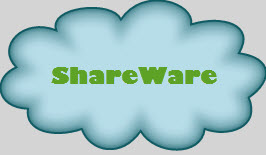Over the years, the definitions for different types of applications have not changed much. What’s changing is how many developers are releasing these types of programs to the public. The differences and similarities between the terms can create confusion. But really, both these terms reflect a distribution method more than anything else.
 What is Freeware?
What is Freeware?
It’s a fluid term. Its meaning varies from place to place. However, there are a few things that mark these applications as different from other types of –wares.
It’s free. It’s important to remember there’s a distinction between free software and freeware. Free software is open source and lets you do literally whatever you want with it. Freeware doesn’t have to be open source or allow you to do anything other than use it as intended. Bojnice . Think of it as free to use and that’s it.
Like any other application you would buy, there’s no other freedom allowed other than usage. You can’t typically use free applications in a production environment without paying for a license.
It can transform. Since it isn’t really an all-encompassing term, it can easily become other types of -ware. If a free product comes with the source code and a GNU licensing or something similar, then it becomes open-source.
If it comes with restrictions that you can lift with a donation, it becomes donationware. It’s at this point that definitions can get tricky. Once the application comes with added functionality that you have to do something for or pay for, it becomes shareware.
What is Shareware?
This is software that you can download, but only use for a period of time before buying it. Or, it allows a limited amount of usage with the full product usage unlocking after a purchase. Demos and trials fall under this category (also called demoware and trialware). It also bears the name crippleware when the product removes a major part of the package that you can only get with a purchase.
The Differences between the Two
Many of the differences between the two have to do with licensing and rights. Free applications usually fall under a licensing agreement, but don’t need to have a copyright holder. It can, but it doesn’t always. The licensing agreement can stipulate how users can distribute the application or use it. If the free application comes with the code source, then it can fall under various open source licensing.
Shareware represents an owned and controlled intellectual property. Copyright is in full effect. You may have the right to distribute it, but you most certainly won’t have the right to alter it. Not without the rights owner’s consent.
Another difference is support and development. Free applications don’t always have a support group or even continued development behind it. That means that if you have problems, you’re usually stuck. back links . Some applications have groups that continue to offer support but it’s a crapshoot. Either you have to wait for the creator to get around to it or find an alternative.

Many times, with freeware, the developer isn’t even around anymore. If there’s source code and the application falls under open-source, then you have a better chance.It may have support and continuing development. Since it’s a commercial product, you are at the mercy of the copyright owner. Only they can come up with changes and fixes for the product. For some commercial applications, there are large support groups. Although, you will have to wait on the owners if something needs changing.

So What about Mobile Apps?
Most apps that you download onto your mobile device fall under the category of shareware. A lot of them allow some use, but cost money to unlock full use. Even truly free apps limit your access. That is, you can’t freely distribute the apps outside of the app store or without the rights holder’s permission.
However, some app creators allow distribution of a free app. As long as end-users know how to download them and load them onto their devices. These types of apps really are free applications.
What about Open Source Software?
Open source is a different thing entirely. Some free applications are open-source, but not all. Open-source applications consists of programs that the copyright holder releases with a license. The licensing allows users and other developers to tinker with the code. These licenses can vary widely, but it’s usually developers that need to understand them most.
Applications become open-source when developers release them with the source code and a governing license. This licensing usually allows creators to modify the existing code. When they modify the code they can create their own spinoffs of the product, or they can add the code to the project. That code can then become a part of future iterations of the project.
Can I Sell My Own Applications Commercially Even if I Release it as Free?
Yes, if you’re the copyright owner, then you can still do what you please with your application. You will notice that a lot of applications out there come with a license for individual use only. Enterprise use requires a licensed purchase. That’s one way that creators have monetized their programs, while still giving back to the community their program represents.